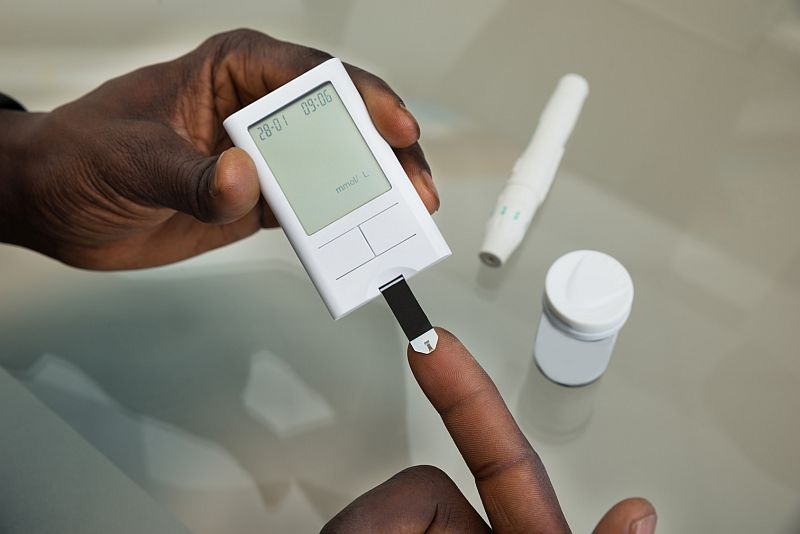
Thursday, September 8, 2016

WEDNESDAY, Sept. 7, 2016 (HealthDay News) -- Intensive management of type 2 diabetes can make a difference in how long and how well you live, even if you don't start until middle age, researchers report.
People who were already at risk of type 2 diabetes complications were randomly selected to continue with their normal treatment or to be placed in an aggressive and multipronged treatment group.
Two decades after the study began, the researchers found that people in the aggressive treatment group lived almost eight years longer.
Not only that, they lived better -- their risk of heart disease, kidney disease and blindness all dropped. The only complication that didn't seem to improve was nerve damage caused by diabetes.
"Early, intensified intervention in type 2 diabetes patients with microalbuminuria with both target-driven pharmacological (medication) and behavioral actions increased life span. And, that extra life length is free from severe and feared complications," said study senior author Dr. Oluf Pedersen. He's a specialist in internal medicine and endocrinology for the Novo Nordisk Foundation Center for Basic Metabolic Research at the University of Copenhagen in Denmark.
Microalbuminuria is the presence of small amounts of protein in the urine. It's a signal the kidneys aren't working properly and the first sign of diabetic kidney damage, according to the American Diabetes Association.
Someone with microalbuminuria is at risk of developing other diabetes complications, because it's a marker for generalized blood vessel damage, Pedersen explained.
The new study included 160 Danish people who had type 2 diabetes and microalbuminuria. Their average age was about 55 when the study began in 1993. All were overweight, bordering on obese, according to the study.
Pedersen said the goal of the intensive treatment was to address all known modifiable risk factors for complications or early death. Those factors include blood sugar, blood pressure, cholesterol and triglycerides, and the risk of blood clots.
When appropriate, medications such as cholesterol-lowering statins or blood pressure drugs were prescribed.
Behavior modification was also a big part of the intensive treatment. Study volunteers were instructed on how to make healthy diet and exercise changes, and they were given help to quit smoking.
They were treated at the Steno Diabetes Center in Copenhagen for almost eight years. "They were constantly educated and motivated," Pedersen said.
All of that motivation paid off.
The participants' blood pressure went down. Good cholesterol rose, while bad cholesterol and triglycerides went down. Not surprisingly, blood sugar levels also dropped.
After slightly more than two decades, 38 people had died in the intensive treatment group, compared to 55 in the conventional therapy group.
In addition to longer survival, the intensive group had an average eight-year delay in the onset of heart disease or stroke, Pedersen said.
The benefits were so clear after the intensive treatment officially ended that both groups were offered continued intensive treatment if they wanted it, Pedersen said.
Dr. Joel Zonszein is director of the Clinical Diabetes Center at Montefiore Medical Center in New York City. "These results are impressive, and the message is important. Physicians are not being aggressive enough, and aren't treating to targets at the beginning," he said.
"If you look at all the factors they (the Danish researchers) treated, about 80 percent of the U.S. population isn't treated correctly, according to national surveys," said Zonszein, who wasn't involved with the study.
Zonszein added that another researcher did a sub-analysis from this data to see which factor made the most difference. "It was mostly giving statins that made a difference," he noted.
And that's good news, since statins are available in generic form, making them affordable for most people, he said.
But it's not clear if the study results would be as impressive if done in an American population, Zonszein said.
"There would definitely be an improvement with intensive treatment, but the population here is very diverse, and would lead to different results," he said.
The study was published recently in the journal Diabetologia.
SOURCES: Oluf Pedersen, M.D., specialist, internal medicine and endocrinology, Novo Nordisk Foundation Center for Basic Metabolic Research, University of Copenhagen, Denmark; Joel Zonszein, M.D., director, Clinical Diabetes Center, Montefiore Medical Center, New York City; Sept. 1, 2016, Diabetologia
HealthDay
Copyright (c) 2016 HealthDay. All rights reserved.
News stories are provided by HealthDay and do not reflect the views of MedlinePlus, the National Library of Medicine, the National Institutes of Health, the U.S. Department of Health and Human Services, or federal policy.
- More Health News on:
- Diabetes Medicines
- Diabetes Type 2





























.png)











No hay comentarios:
Publicar un comentario